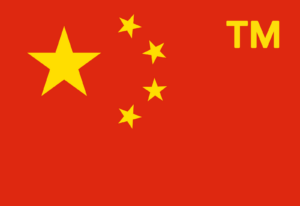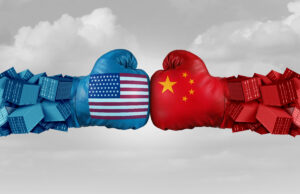How Foreign Companies Are Adapting Their China Strategies in 2024
The tides are turning for foreign companies operating in China. The once-unparalleled access to China’s vast manufacturing base and a seemingly insatiable consumer market is now accompanied by a new set of challenges. Rising geopolitical tensions, a focus on domestic sustainability goals, and ongoing supply chain disruptions are forcing foreign businesses to re-evaluate their China strategies.
This blog post looks at the current landscape for foreign companies in China, explores the key trends in foreign company adaptation strategies, and provides real-world examples to help businesses navigate this evolving market.
The Challenges of Doing Business in or with China
The initial allure of China’s booming economy and low manufacturing costs has in the past few years been tempered by a complex interplay of factors. The ongoing trade war between the US and China and the EU and China continues to cast a shadow, with tariffs and import restrictions impacting various industries. The Chinese government’s increasing focus on self-sufficiency and domestic innovation, coupled with stricter regulations on data security and intellectual property, present new hurdles for foreign companies.
Beyond policy shifts, the COVID-19 pandemic exposed vulnerabilities in global supply chains, with China playing a pivotal role. Lockdowns and travel restrictions disrupted production and logistics, highlighting the need for diversification and risk management strategies.
Many companies believe that China’s aid to Russia in Russia’s war against Ukraine and its ever-growing belligerence towards Taiwan will eventually shut down all or nearly all trade between China and the West.
These factors have created a landscape where foreign companies are no longer willing to rely on a “business as usual” approach with China. Companies are actively re-evaluating their China strategies, with a focus on resilience, adaptability, and long-term sustainability.
Key Trends in Adapting China Strategies
The below are some of the key trends our international lawyers are seeing our clients doing to update their China strategies.
1. Diversification and the Rise of Southeast Asia
Many companies are seeking to reduce their dependence on China for manufacturing. This has led to a surge in investment in Southeast Asian countries like Vietnam, Thailand, and Indonesia. These countries offer lower labor costs, preferential trade agreements, and government incentives designed to attract foreign investment. Companies are setting up new manufacturing facilities in these regions or partnering with local manufacturers.
2. Doubling Down on Niche Markets
Though diversification is a key strategy, some companies are choosing to focus their efforts on specific sectors where China remains a strong partner. Luxury goods and premium brands continue to see strong demand in China’s growing affluent consumer market.
Our China lawyers continue to see high-tech collaboration in areas like artificial intelligence or robotics, where China boasts advanced research capabilities and a large pool of skilled engineers, though the risks with these industries are sky-high on many levels, ranging from IP theft to national security concerns.
3. Building Supply Chain Resilience
Companies are working to strengthen their supply chains and mitigate risks associated with an over-reliance on China. This involves strategies like:
- Dual sourcing: Establishing partnerships with suppliers in multiple countries to avoid disruptions caused by single sourcing from China.
- Nearshoring: Moving production closer to target markets, particularly for time-sensitive goods. See e.g., Mexico.
- Investing in technology: Utilizing technologies like blockchain for supply chain transparency and real-time tracking.
4. Embracing the Green Shift
China’s ambitious environmental goals, with a focus on achieving carbon neutrality by 2060, present both challenges and opportunities for foreign companies. Companies that can provide clean technology solutions, energy-efficient manufacturing processes, or sustainable materials are well-positioned to tap into this growing market segment. But as evidenced by recently enacted U.S. tariffs on many of these products, these items are also very high risk.
5. Evolving E-commerce Strategies
The landscape of e-commerce in China is constantly evolving, with social media platforms like WeChat playing an increasingly dominant role. Companies are adapting their marketing and sales strategies to reach consumers through these new channels, while also navigating complex regulations around data privacy and online advertising.
Real-World Examples of How Companies Are Adapting
Manufacturing Diversification
- Apparel company X. Faced with rising tariffs and supply chain disruptions, company X diversified its manufacturing base by establishing new production facilities in Vietnam while maintaining a presence in China for some of its higher-end lines. We have had many client companies in a wide variety of industries do the exact same thing.
Niche Market Focus
- Semiconductor manufacturer Y. Recognizing China’s growing importance in the global semiconductor market, this company established a joint research and development center in China to collaborate with local companies on next-generation chip technology.
Building Supply Chain Resilience
- Auto Parts Company Z. To mitigate the risk of production stoppages due to parts shortages, auto parts company Z has implemented a multi-sourcing strategy for key components. They have gone from are sourcing parts from just China to sourcing now from Chinese, Indian, and Mexican suppliers.
Conclusion
Succeeding with China in 2024 requires foreign companies be adaptable and forward-thinking. By diversifying manufacturing bases, focusing on niche markets, building supply chain resilience, embracing environmental initiatives, and evolving e-commerce strategies, businesses can better manage risks and seize opportunities. The shifting landscape underscores the importance of strategic planning and flexibility in maintaining a competitive edge in China.

























